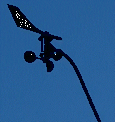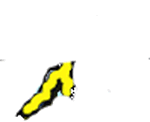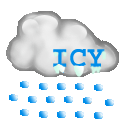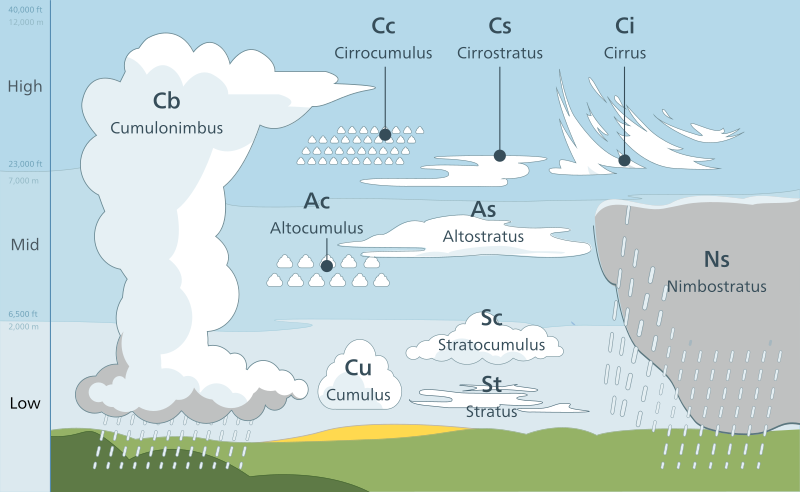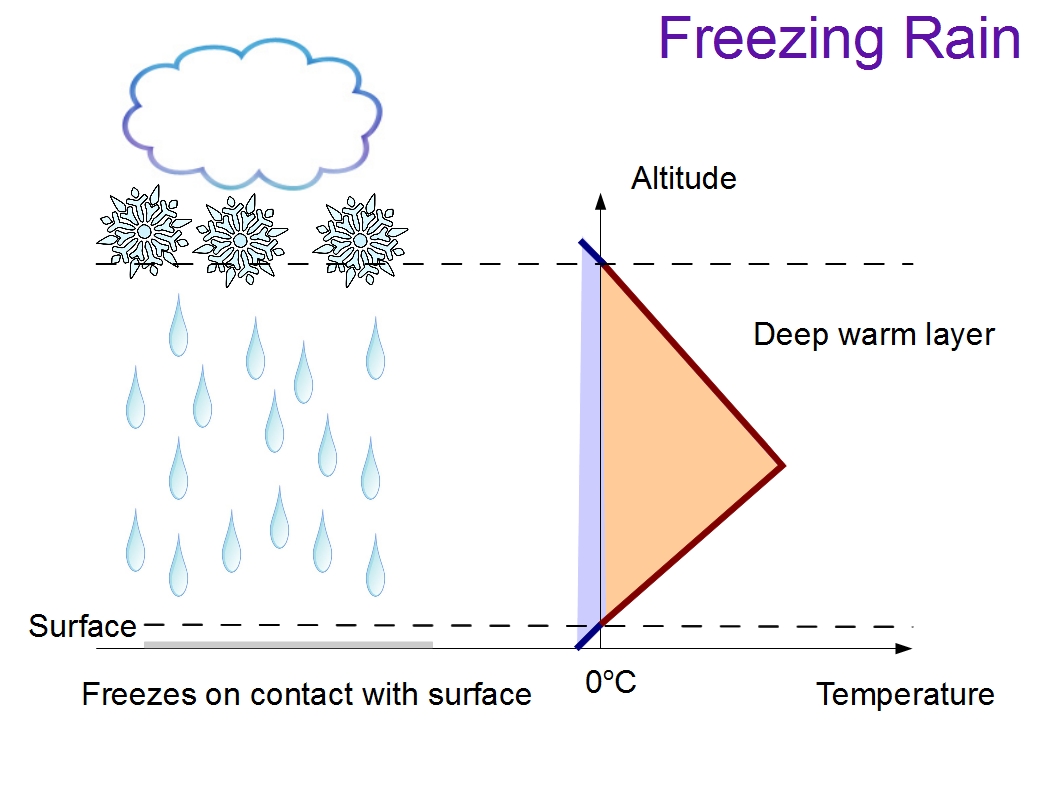The Water Cycle, as dipicted by the US Geological Survey
dew point - temperature at which the air must cool to be 100% saturated with water molecules and vapor
humidity - amount of water vapor in the air
evaporation - Liquid water Turning from a liquid into a gas (vapor)
condensation - process by which water vapor turns into a liquid
front - an area where two different types of air masses collide
Atmosphere - The entire layer of air that surrounds the earth, made up of 78% Nitrogen, 21% oxygen, and 1% other gases.
Precipitation - any water or ice molecules that travel from a cloud in the atmosphere to the ground.
Types of precipitation:
Rain - water droplets that fall from a cloud and reach the ground in the form of liquid droplets.
Snow - Ice crystals that fall out of a cloud and fall through cold air molecules less than 32 degrees to the ground surface
Sleet - also called ice pellets, are ice crystals that fall out of a cloud with a cold layer, then enter a warmer layer and become
water droplets, then refreeze through a thick cold layer below 32 degrees well above the ground and form small
round ice pellets in the form of sleet.
Freezing Rain - water droplets that fall out of a cloud through a very thick warm layer above 32 degrees farhenheit, then freeze
on contact on surfaces such as the ground, metal objects, wood, bridges, trees, powerlines, anything that is below
32 degrees farhenheit at the grounds surface.
Hail - water droplets that usually form in a thunderstorm, that are carried back up inside the cloud many times, sometimes as much
as 6 or 7 times before it falls down to earth often forming layers of ice at its carried higher and higher into colder layers
of the atmosphere. By the time it reaches the ground surface, it can fall as small as 1/8 of an inch around pea sized hail,
all the way up to softball and baseball sized hail. The largest hail ever recorded was the size of grapefruits.
graupel - small, ice particle that falls as precipitation similiar to sleet and ice pellets, only it breaks apart easily when it hits the grounds
surface. Also known as a snow pellet or soft hail.
Virga - Precipitation that is falling, but does not reach the ground, due to very dry air at the surface of the earth.




